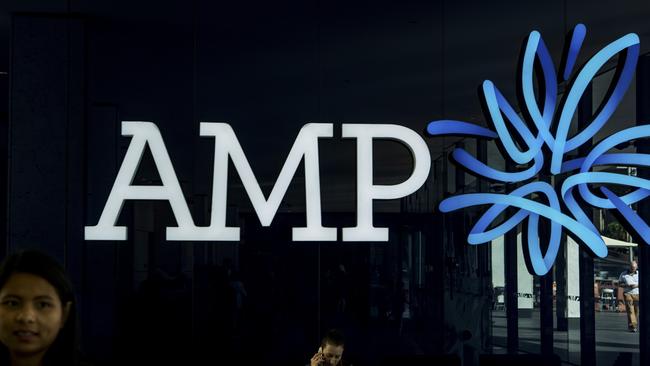AMP advisers looking for a plan
The writing was on the wall for hundreds of AMP advisers when they were called to key meetings in late July.

The writing was on the wall for hundreds of AMP advisers when they were called to key meetings with management of the 170-year-old wealth group in late July.
The beleaguered wealth group had already told investors its controversial $3.3 billion deal to sell its life insurance business was “highly unlikely” to proceed and was in damage control. The announcement was coupled with axing the interim dividend.
At the July meetings, hundreds of advisers got the sense they would no longer be required by AMP and wouldn’t be able to operate under the group’s licence.
New chief executive Francesco De Ferrari had already laid the groundwork for marked change at the group’s annual general meeting in May.
With the life insurance transaction in tatters and a strategy blueprint to be handed down on August 8 — including savage cuts to the adviser network — many are asking how AMP can forge a way forward.
Industry sources have suggested there are stark differences of opinion on the AMP board as to whether to resurrect a life insurance deal or look to other options, such as retaining the business or spinning it off.
A third option is separating the mature book, which is legacy products in run-off, from the rest of the life business and seeking a buyer that way.
Other investment banks are seeking to muscle in on the territory of long-term AMP adviser UBS, which has also found the situation challenging.
Large private equity groups are said to have a watching brief on AMP, particularly given the latest share price slump, as is Macquarie Group, which ran the numbers on AMP late last year.
AMP’s shares have tumbled 25 per cent this year to almost $1.84 and expectations for its interim profit vary widely. That follows net cash outflows of $1.8bn from its wealth business in the first quarter.
Some industry participants can’t see a solution to AMP’s woes without a break-up.
But many existing shareholders, some of which have been asked in recent weeks to provide detailed feedback to the board on strategy, are committed to the company for the long haul.
“Management have the opportunity to preside over one of Australia’s great corporate turnarounds,” Allan Gray’s managing director Simon Mawhinney said, adding that given its current position, AMP should not sell any assets in the near term.
“Selling something now, it’s very unlikely AMP shareholders will receive full value for that asset.”
Mr Mawhinney will, however, be disappointed if AMP doesn’t announce significant changes in its wealth and advice business, which in his view doesn’t earn adequate returns for the risk assumed.
“It does need a complete overhaul. There are massive costs incurred by AMP that essentially bankroll an adviser network,” he said.
Other investors are extremely bearish on AMP. “It’s going to be bloody tough from here on in,” a fund manager who doesn’t own AMP stock said.
Some analysts are pencilling in a $1bn capital raising following the collapse of the life deal, while others argue it is unnecessary. Larger charges for customer remediation are almost a given, though, as AMP reviews customer files after the turmoil of last year’s Hayne royal commission.
Investors will also want an update on agreements that facilitate AMP as the buyer of last resort if an adviser running a practice wants to leave the industry or retire.
With funds from the adviser network flowing into products in AMP Capital’s business, any implications from large-scale cuts to planner numbers will also be dissected. But some investors said the proportion was not high enough to cause concern.
One vocal critic of the now unlikely life insurance deal, Merlon Capital Partners principal Hamish Carlisle, said AMP had suffered brand damage but the company’s model wasn’t broken.
“Large parts of AMP are not broken: we would point in particular to the mature business, the real assets business within AMP Capital, the New Zealand business and the bank,” he said.
“The problematic parts are really the advice business and the wealth protection business, and a lot of the issues that AMP is dealing with in those areas are not AMP-specific issues — they are industry issues.
“Provided you believe that advice and life insurance have a valid role in the market long term, AMP should be as well positioned as anyone to compete, provided management execute well.”
Merlon has valued AMP in its entirety at $10bn-$18bn, or $3.50-$6 per share, after conducting a sum of the parts AMP analysis.
Included in the analysis is a life business worth as much as $6bn, infrastructure and property funds management operations valued at up to $3.3bn, the listed asset management arm at up to $1.4bn and the bank at up to $2.3bn.
Another interested party is Mitsubishi UFJ Financial Group which holds a 15 per cent stake in real assets, infrastructure and listed asset arm AMP Capital.




To join the conversation, please log in. Don't have an account? Register
Join the conversation, you are commenting as Logout